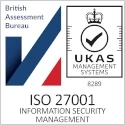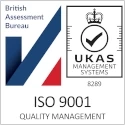
Regular System Maintenance and Ensuring a Smooth-Running IT
IT infrastructure is the backbone of modern businesses. Businesses leverage their IT infrastructure for critical operations, including data storage, employee authentication, enabling remote work and collaboration, and running cloud software. If this infrastructure breaks down, many businesses would be completely paralysed. Additionally, the costs of such a breakdown and the subsequent downtime could be financially catastrophic for the affected business.
Businesses cannot afford any hiccups with their IT infrastructure. This places a massive emphasis on ensuring the infrastructure runs as smoothly as possible and without any issues. The best way of doing this is by monitoring the system, identifying and rectifying any issues, and, most importantly, carrying out routine maintenance.
In this article, we will focus on these and other ways of ensuring your IT infrastructure and environment continues running smoothly so you can avoid the devastating effects of a breakdown or downtime.
15
+
YEARS OF
EXPERIENCE
1000
+
SUCCESSFUL
Projects
80
+
Satisfied
Clients
Regular Patching and Vulnerability Monitoring
While businesses and IT professionals would prefer that it not be so, every piece of software or hardware has bugs or vulnerabilities. Some are glaringly obvious, while we only learn of others after they are revealed by people actively trying to eliminate them or those affected.
Once announced, every malicious actor tries to leverage them to gain access to a system to steal data, plant ransomware, or do anything else they wish. The best way of stopping this is by applying the recommended patches and keeping your IT infrastructure up to date.
Software and hardware developers release patches and updates all the time to remove vulnerabilities they have identified or that have been identified by the larger community. You can set your systems to upgrade automatically, but that is not always the best option.
The reason is that by the time the system updates, malicious actors might already know about the vulnerabilities and have already taken advantage of them. What you need is an IT support South London team to keep an eye out for any vulnerabilities and apply patches and updates promptly.
It is in these teams’ best interests to know what is happening in the IT industry so they can give their clients the best cyber protection possible. For this reason, they are more likely to know about any vulnerabilities that require attention.
Additionally, they understand your IT infrastructure. It is easy for them to know which patches and updates are relevant to you so they can apply them quickly and as soon as they are available.
Get Advice on Regular Hardware Refreshes from an IT Support South London Team
As mentioned, hardware manufacturers do a great job of patching any vulnerabilities in the hardware they sell. However, every piece of hardware ultimately reaches its end of life when the manufacturer stops providing these patches. Those who continue using hardware that is no longer supported put themselves at a higher risk of cyberattacks. Once the hardware has reached its end of life, hardware manufacturers recommend that you upgrade to a newer model or choose another hardware solution.
Then, there is the issue of hardware slowing down over time. All hardware eventually gets so old that it no longer provides the performance it used to. For a fast-paced business that relies on its IT infrastructure for critical business operations and processes, this is a situation you should not find yourself in.
A part of routine IT environment maintenance is ensuring all hardware is supported, safe, and still providing the level of performance the business expects. If not, it is a good idea to ask an IT support South London professional for help sourcing new hardware.
Apart from ensuring you get supported hardware that fits your needs, the IT support team might also recommend hardware that provides additional benefits and features. A great example is network switches.
Until recently, a network switch that could handle 1Gbps speeds was typically enough for businesses. Now, 10Gbps is the norm, especially for businesses with many devices that need faster internet speeds. The same applies to faster processors, RAM storage solutions like SSDs, and Ethernet cables that all ensure better performance.







Let an IT Support South London Team Help with Temperature Monitoring and Management
Another important IT maintenance task is temperature monitoring and control. This is a concern that businesses that have on-premises servers should worry about, but not those utilising off-site or cloud solutions.
All hardware is rated to operate within specific temperature ranges. Temperature fluctuation can damage servers, individual devices that overheat, and server rooms in case of a fire. The fans and heatsinks inside servers should keep them cool, but this equipment produces so much heat that the surrounding air gets saturated.
When it does, it has nowhere to go and the components inside the server cannot be cooled adequately. The result is overheating that can be catastrophic at different levels depending on what is affected.
This overheating is why IT companies and many businesses place their servers in temperature-controlled rooms. These rooms have ventilation and systems that remove heat and bring fresh air in. The result is a healthy circulation of cool and warm air that stops the room, the server, and its components from overheating.
If you do not know how to build a server room that does not cause your server to die, call an IT professional who knows how to design one. Alternatively, you can find an IT support South London business that will set up off-site or cloud IT infrastructure for you. When they do, you never have to worry about temperature again.
Humidity Management and Monitoring
We all understand that too much moisture in the air is bad for computer systems. The build-up of moisture in computer internals and on components can lead to numerous problems, the most common one being short circuits and the death of hardware.
What most people do not know is that too little humidity can also cause issues. Very dry air can cause static to build up. Static can jump from one component to another, causing static discharge that damages server components.
Humidity management and monitoring should, therefore, be a part of your IT management routine. Check the humidity often and ensure it is about 40-50% to ensure your components remain safe.
Check Your Physical Infrastructure Often
Apart from a server, numerous other components are part of an IT infrastructure. These range from computers, routers, and printers to mobile devices. You should inspect your physical infrastructure regularly to ensure everything is running smoothly. Ensure your devices are running and that the cables are intact. Sometimes ethernet cables get frayed from being pulled, crushed under chairs, or being inserted into and removed from devices.
When doing this, it is also a good idea to run a cybersecurity check on your whole physical infrastructure. Due to the connections between physical devices, infections can spread very quickly if even a single device is infected. You want to ensure no viruses or malware are lying dormant in your infrastructure waiting to wreak havoc.
Check Your Wireless IT Infrastructure
Many businesses now provide wireless access to not only the internet but their IT infrastructure. Doing so makes the user experience frictionless, but it comes with some challenges. It is important to get it out of the way that security is not as big a concern as it was a few years ago unless a device is compromised some other way. The reason is that the Wi-Fi standard now includes security features that stop attacks that used to be popular in the past, like man-in-the-middle attacks.
Instead, the common issue you run into today is frequency congestion; there are so many devices using wireless connections that there can be interference that leads to poor wireless performance. There is also the issue of obstacles and placement of wireless access points.
Since the number of devices will continue increasing, you have to continually check your wireless network to ensure it continues performing as expected. If you do not know how to optimise it, it is a good idea to contact an IT support South London professional to set everything up for you and to check it regularly.
Check Your Backups Often
Even when you have an IT support South London team handling your backups for you, it is a good maintenance practice to check on them regularly. The company or team will give you a dashboard or another way to check your backups. You want to ensure that you have several backups spaced apart reasonably so that you can restore your systems quickly should something happen to your primary data storage or backup solution.
Some IT teams and businesses also give you a report every time they back up your data, so go through the logs regularly to see whether your backups are complete. Also, ask the company if they can check the integrity of your backups. Many companies do this when saving them, but it never hurts to ask as it would be massively beneficial if they do this.
Businesses cannot set up their IT infrastructure and forget about it. They either have to actively manage it themselves, get a managed IT service provider to help them, or work together to ensure the infrastructure is robust, safe, and performant. Such management requires taking care of some regular tasks like actively monitoring what is happening with your hardware and software, whether your infrastructure is safe, and whether your server is operating in an optimal environment.
Find more:


answer time
satisfaction
score
on initial call
same business
day









